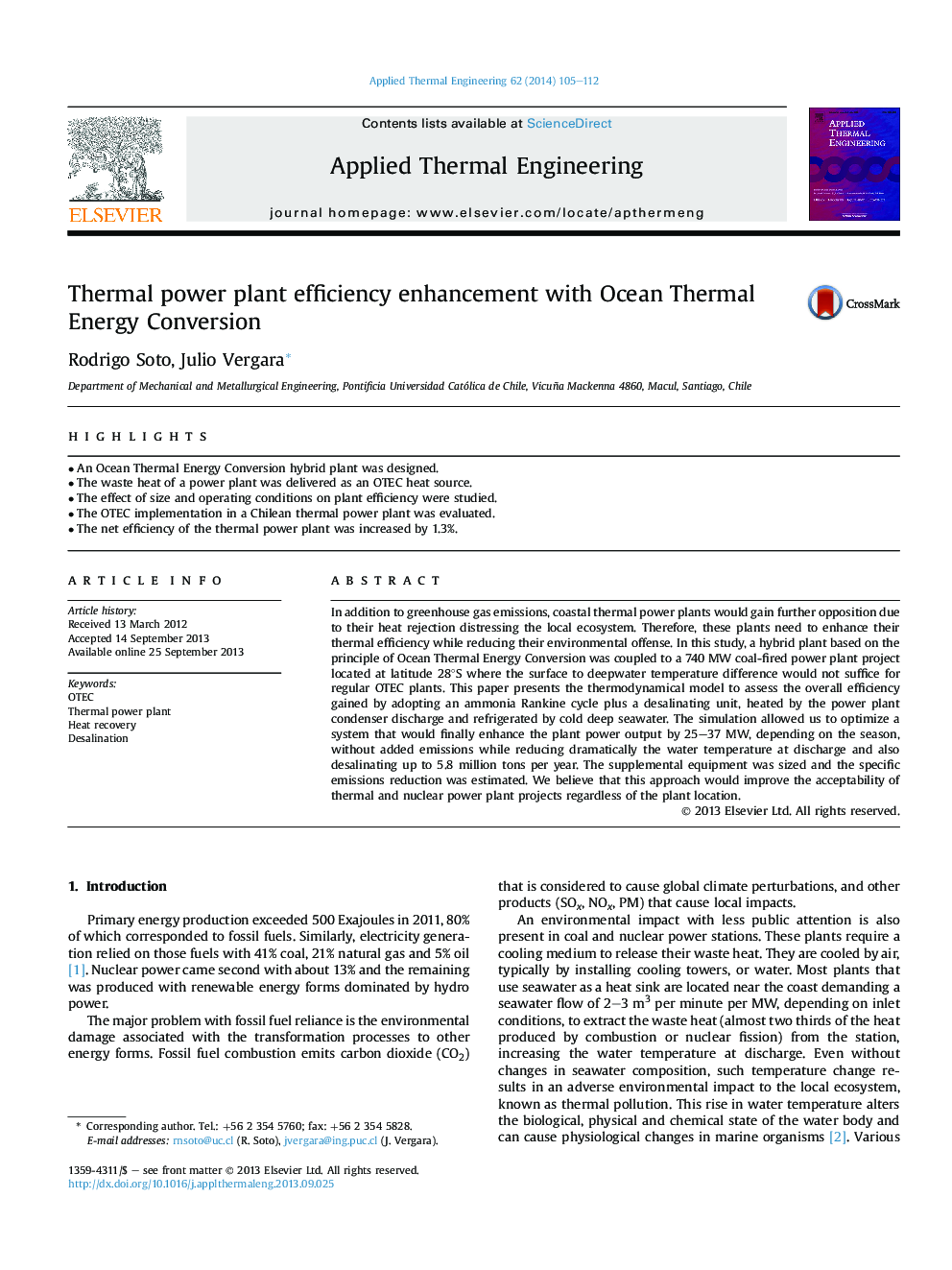| Article ID | Journal | Published Year | Pages | File Type |
|---|---|---|---|---|
| 646730 | Applied Thermal Engineering | 2014 | 8 Pages |
•An Ocean Thermal Energy Conversion hybrid plant was designed.•The waste heat of a power plant was delivered as an OTEC heat source.•The effect of size and operating conditions on plant efficiency were studied.•The OTEC implementation in a Chilean thermal power plant was evaluated.•The net efficiency of the thermal power plant was increased by 1.3%.
In addition to greenhouse gas emissions, coastal thermal power plants would gain further opposition due to their heat rejection distressing the local ecosystem. Therefore, these plants need to enhance their thermal efficiency while reducing their environmental offense. In this study, a hybrid plant based on the principle of Ocean Thermal Energy Conversion was coupled to a 740 MW coal-fired power plant project located at latitude 28°S where the surface to deepwater temperature difference would not suffice for regular OTEC plants. This paper presents the thermodynamical model to assess the overall efficiency gained by adopting an ammonia Rankine cycle plus a desalinating unit, heated by the power plant condenser discharge and refrigerated by cold deep seawater. The simulation allowed us to optimize a system that would finally enhance the plant power output by 25–37 MW, depending on the season, without added emissions while reducing dramatically the water temperature at discharge and also desalinating up to 5.8 million tons per year. The supplemental equipment was sized and the specific emissions reduction was estimated. We believe that this approach would improve the acceptability of thermal and nuclear power plant projects regardless of the plant location.
